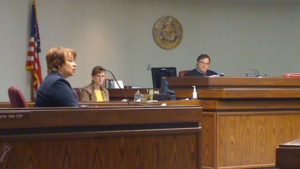Don’t Be Worried About Your Personal injury Lawsuit
Sometimes you need to exercise your right to pursue a personal injury lawsuit to get a fair result for your injury claim. If your claim cannot be resolved through negotiation, the litigation process is the next step in recovering for the harms and losses that have been imposed upon you. Claims do not  resolve without a lawsuit for a variety of reasons. For example, the insurance company might not agree on the severity of your injury, its long term consequences, or its value. Often they don’t resolve because the two sides have a different view of who is responsible for the injury.
resolve without a lawsuit for a variety of reasons. For example, the insurance company might not agree on the severity of your injury, its long term consequences, or its value. Often they don’t resolve because the two sides have a different view of who is responsible for the injury.
Starting Your Personal Injury Lawsuit
A lawsuit is started by the filing of a complaint. A complaint is not necessarily filed immediately upon realizing the case cannot be settled. One thing that makes sense most of the time is to make sure that the fullest extent of the person’s injuries are understood. Because a lawsuit resolution is final, having the ebst understanding of an injury possible is a key to when suit is filed. Other times, because of issues related to;liability it night be the best tactic to file more quickly. When to files suit is evaluated on a case by case basis.
The Complaint lays out in pretty broad terms the factual and legal basis the injured person (the plaintiff) is relying on to recover their damages. The complaint is filed at the appropriate county courthouse. The court issues a summons to the person who the plaintiff claims is responsible for the injury (the defendant.)
The plaintiff’s attorney then has a period of time to locate the defendant and “serve” the complaint. Service just means physically delivering the complaint to the defendant to prove they know about the lawsuit. People called process servers assist the attorneys with this step. In Idaho state court the defendant then has 20 days to appear in court.
The Defendant Appears in the Lawsuit
One of the things that is true in most injury litigation is that there is an applicable insurance policy. One of the benefits of having liability insurance is that the insurance company agrees to pay for the lawyer to represent a defendant in court. But, a defendant must notify the insurance company as soon as he has been served.
Once, the defense lawyer has been notified of the case, that person files an answer to the complaint at the courthouse to place the matter “at-issue.”
The Litigation Process Before Trial
Discovery
In modern litigation there is an extended pre-trial phase called the “discovery” process. During discovery each side asks the other for their evidence and witness information. There are scheduling conferences with the judge to set deadlines for finishing discovery and establishing a trial date.
As part of discovery, depositions are taken. This includes the plaintiff’s deposition. These are pre-trial interviews under oath of the various parties and witnesses that usually take place in the lawyer’s offices.
Motion Practice
At times the lawyers undertake “motion practice” before the judge. This is a process where one party asks the judge for a legal ruling that impacts the litigation. Defendant’s often ask the judge in motion practice to throw out the case on “summary judgment” because they claim the plaintiff cannot possibly win at trial. Defense lawyers are paid hourly, summary judgment motions take lots of time. Most summary judgment motions lose.
Settlement in Litigation
After all the factual and legal work of discovery and motion practice, there is often an opportunity to settle without trial. This can happen voluntarily through discussions between the lawyers and their clients (and usually the insurance company). In modern litigation, courts often require mandatory settlement conferences, or require a formal mediation.
In a basic Idaho state court personal injury lawsuit this discovery process and intermittent court appearances usually takes 10 to 20 months sometimes longer.
Trial
If no resolution is reached trial begins. Most personal injury lawsuit trials last in the range of three to eight trial days. At trial, the lawyers go through the process of putting on evidence and making argument. The jury is asked to decide whether as a factual matter the defendant is responsible for the injuries suffered by the plaintiff and the value of those injuries. There can be post-trial motion practice and even appeals.
Settlement Remains the Most Likely Outcome for Cases
It remains true that the vast majority of cases settle before trial. And many that start trial settle during trial. But if a case cannot settle a jury decides who is responsible and the amount of compensation you should receive.

